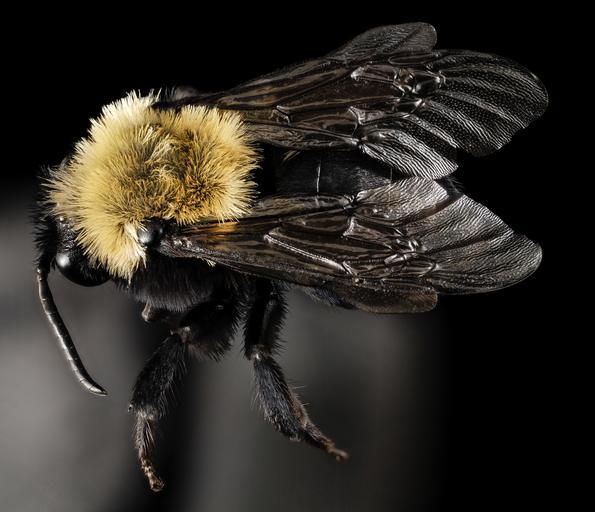MAKE A MEME
View Large Image

| View Original: | melecta_pacifica,_f,_md,_pg,_back_2015-05-14-09.29.37_ZS_PMax.jpg (4200x3612) | |||
| Download: | Original | Medium | Small | Thumb |
| Courtesy of: | www.flickr.com | More Like This | ||
| Keywords: bee bees insect parasite nest parasite nestparasite first record firstrecord new record newrecord maryland beltsville beltsville agriculture research center beltsvilleagricultureresearchcenter patxuent wildlife research center patxuentwildliferesearchcenter melecta melecta pacifica melectapacifica taxonomy:binomial=melecta pacifica taxonomy:binomial=melectapacifica apidae apoidea hymenoptera bug bugs biml sam droege samdroege droege usgs united states geological survey unitedstatesgeologicalsurvey stackshot zerene stacker zerenestacker stacking black background animal macro people photo border Melecta pacifica. A new state record for Maryland...captured right outside my Laboratory's front lawn! A few days ago I was watching and collecting bees out of a lovely clay filled bare patch of soil that refuses to grow any grass and is thus a lovely colony of all sorts of interesting nesting bees, wasps, and ants. At one point I noticed a large bee coursing over the colony and my immediate impression was that this was a Melecta and that I should nab that baby. Fortunately my trusty net was at hand and it zig zagged in just the right way. I had been expecting to find this species at some point as its host (Anthophora abrupta) is around, though not common. Just goes to show you how much more we have to do to document simple bee distribution even. We are 100 years behind what we know about bird distributions ... or more. ~~~~~~~~~~{{{{{{0}}}}}}~~~~~~~~~~ All photographs are public domain, feel free to download and use as you wish. Photography Information: Canon Mark II 5D, Zerene Stacker, Stackshot Sled, 65mm Canon MP-E 1-5X macro lens, Twin Macro Flash in Styrofoam Cooler, F5.0, ISO 100, Shutter Speed 200 Beauty is truth, truth beauty - that is all Ye know on earth and all ye need to know " Ode on a Grecian Urn" John Keats You can also follow us on Instagram account USGSBIML Want some Useful Links to the Techniques We Use? Well now here you go Citizen: Basic USGSBIML set up: www.youtube.com/watch?v=S-_yvIsucOY USGSBIML Photoshopping Technique: Note that we now have added using the burn tool at 50% opacity set to shadows to clean up the halos that bleed into the black background from "hot" color sections of the picture. www.youtube.com/watch?v=Bdmx_8zqvN4 PDF of Basic USGSBIML Photography Set Up: ftp://ftpext.usgs.gov/pub/er/md/laurel/Droege/How%20to%20Take%20MacroPhotographs%20of%20Insects%20BIML%20Lab2.pdf Google Hangout Demonstration of Techniques: plus.google.com/events/c5569losvskrv2nu606ltof8odo or www.youtube.com/watch?v=4c15neFttoU Excellent Technical Form on Stacking: www.photomacrography.net/ Contact information: Sam Droege sdroege@usgs.gov 301 497 5840 Melecta pacifica. A new state record for Maryland...captured right outside my Laboratory's front lawn! A few days ago I was watching and collecting bees out of a lovely clay filled bare patch of soil that refuses to grow any grass and is thus a lovely colony of all sorts of interesting nesting bees, wasps, and ants. At one point I noticed a large bee coursing over the colony and my immediate impression was that this was a Melecta and that I should nab that baby. Fortunately my trusty net was at hand and it zig zagged in just the right way. I had been expecting to find this species at some point as its host (Anthophora abrupta) is around, though not common. Just goes to show you how much more we have to do to document simple bee distribution even. We are 100 years behind what we know about bird distributions ... or more. ~~~~~~~~~~{{{{{{0}}}}}}~~~~~~~~~~ All photographs are public domain, feel free to download and use as you wish. Photography Information: Canon Mark II 5D, Zerene Stacker, Stackshot Sled, 65mm Canon MP-E 1-5X macro lens, Twin Macro Flash in Styrofoam Cooler, F5.0, ISO 100, Shutter Speed 200 Beauty is truth, truth beauty - that is all Ye know on earth and all ye need to know " Ode on a Grecian Urn" John Keats You can also follow us on Instagram account USGSBIML Want some Useful Links to the Techniques We Use? Well now here you go Citizen: Basic USGSBIML set up: www.youtube.com/watch?v=S-_yvIsucOY USGSBIML Photoshopping Technique: Note that we now have added using the burn tool at 50% opacity set to shadows to clean up the halos that bleed into the black background from "hot" color sections of the picture. www.youtube.com/watch?v=Bdmx_8zqvN4 PDF of Basic USGSBIML Photography Set Up: ftp://ftpext.usgs.gov/pub/er/md/laurel/Droege/How%20to%20Take%20MacroPhotographs%20of%20Insects%20BIML%20Lab2.pdf Google Hangout Demonstration of Techniques: plus.google.com/events/c5569losvskrv2nu606ltof8odo or www.youtube.com/watch?v=4c15neFttoU Excellent Technical Form on Stacking: www.photomacrography.net/ Contact information: Sam Droege sdroege@usgs.gov 301 497 5840 | ||||